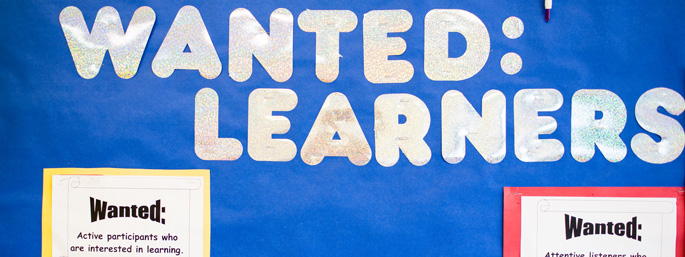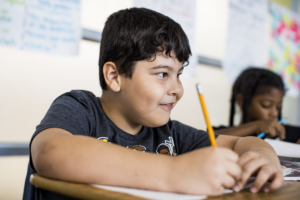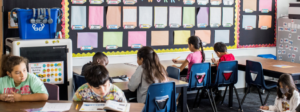This is the final installment in our series about Literacy with Voice and Choice. Read Part 1 and Part 2.
TNTP’s partnerships with Concourse Village Elementary School and Haven Academy were made possible by the Robin Hood Learning + Technology Fund, and the Calder Foundation supported work with two additional sites in Chicago and Oakland. We’re currently recruiting for a new cohort of Literacy with Voice and Choice partners, who would design, pilot, and implement their vision for this approach beginning Fall 2021.
When you first enter Concourse Village Elementary School—a New York City Department of Education school located in the heart of the South Bronx—you’re struck by the school’s devotion to its core values: integrity, perseverance, optimism, willingness, empathy, and respect (iPOWER). Educators at CVES pride themselves on developing well-rounded students who will become responsible adults that positively impact the world.
TNTP began a partnership with Concourse Village to try out a new and dynamic model for teaching reading. To understand how revolutionary this change is, you have to first understand the history of literacy instruction. For decades, educators have taught children to read based on the belief that reading is something that comes naturally to children. But as researchers have documented, that’s just not true. Kids’ brains actually need to be wired to connect sounds with words.
Increasingly, educators are acting on the research by embracing the “science of reading”—an approach where teachers emphasize phonics instruction in the early grades, ensuring elementary-aged kids develop the foundational skills they need to become successful readers. Upper grade teachers can then focus on comprehension by deepening students’ knowledge and vocabulary through the study of increasingly complex texts.
A strong curriculum does all of this using topically organized and strategically sequenced units—both within and across grade levels—so kids’ vocabulary and knowledge of the world builds rapidly and cumulatively, allowing them to comprehend more demanding texts. But it’s difficult and time-intensive to develop a literacy curriculum from the ground up that builds knowledge coherently and strategically across grade-levels. That’s why we recommend adopting high-quality curriculum materials—something a school can do with a resource like Edreports and a team review of highly rated options.
With high-quality materials in place, teachers can focus on how to deliver instruction that engages all students and expands their knowledge and vocabulary. It’s an approach Founding Principal Alexa Sorden and her team at Concourse Village honed throughout our partnership. Ms. Nunez, a fifth grade ELA and Social Studies teacher at CVES, describes how she and her colleagues help students unlock meaning and build knowledge from rich texts: “The students have one text that they interact with for five days, and we break it down into phases: from determining the main idea, to annotating that text thoughtfully, to answering text-based questions, to finally wrapping it up and answering a short response.”
You can see the stickiness of this approach from the reflections of CVES fourth grader Sebastian Salcedo, when he describes reading Love Amalia, a book about a girl whose best friend is moving away: “In fourth grade, I learned about loss and how to deal with it. In this book, Amalia deals with a lot of loss. We’ve been learning about central messages, so we read books and then we’d dig deeper to look for more details. For example, one central message is that slow and steady wins the race or that we should never give up.”
When our partnership with CVES began, some teachers were concerned that using a school-wide curriculum might stifle teacher creativity. But the opposite turned out to be true. When teachers start from a high-quality base as they do in Literacy with Voice and Choice, they can focus their planning time on how students will engage in the rich texts that make up the curriculum rather than creating the curriculum itself. That’s an area where connections to students’ interests, providing choices, and leveraging technology all leave plenty of room for creativity.
Literacy with Voice and Choice answers the question: How does my school deliver high-quality literacy instruction that leverages all the investments we have made in instructional materials, devices, and connectivity, while also meeting the increasingly divergent needs of students and engaging them all in rich, meaningful content? We hope more schools will bring these elements together—because we believe it would give more students the same magical sense of excitement about their learning we heard from Sebastian, Kaden, and others.








